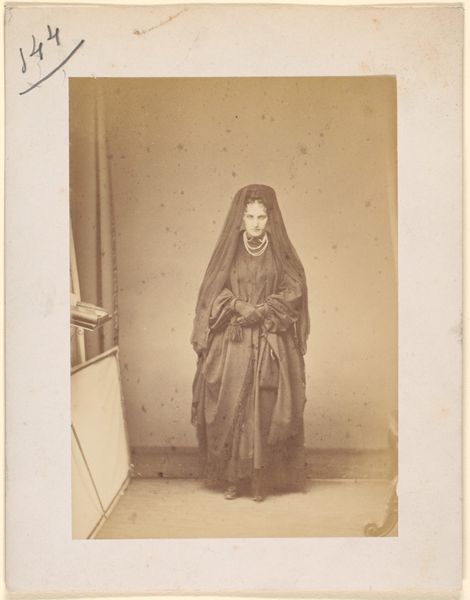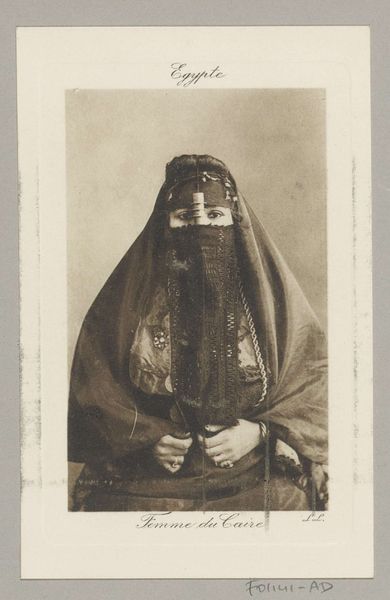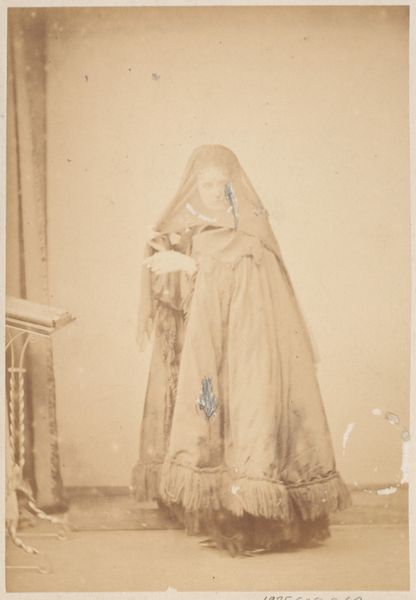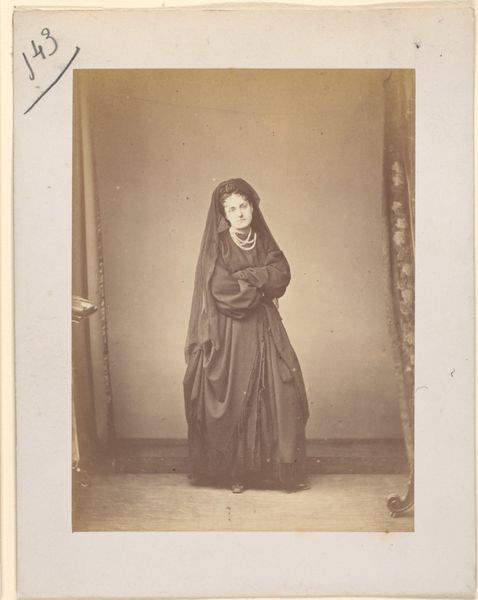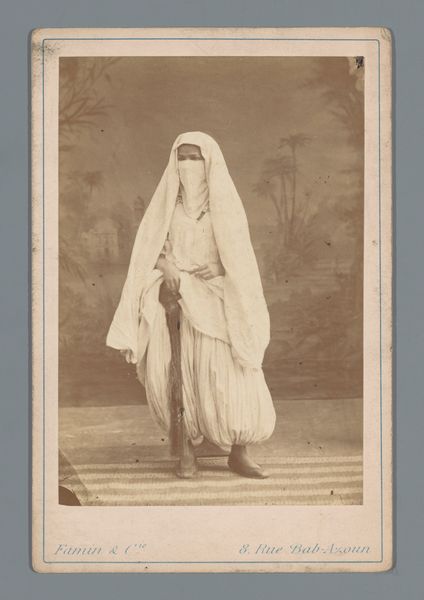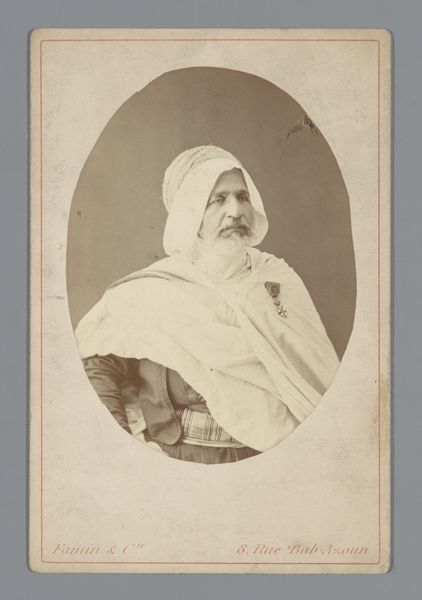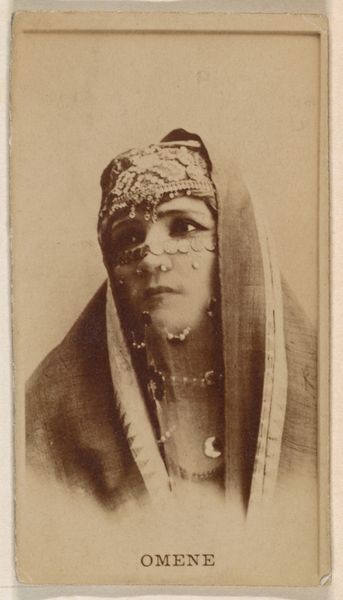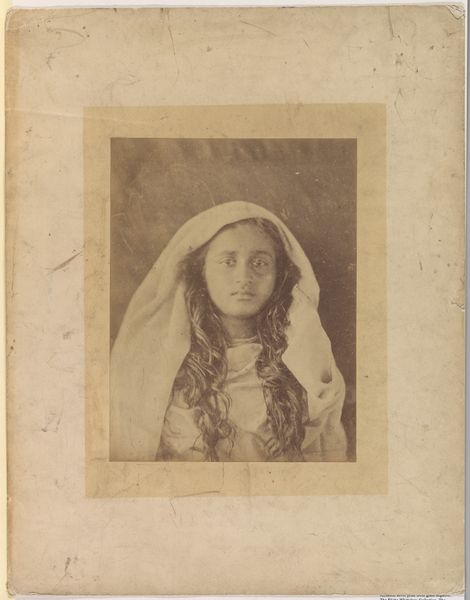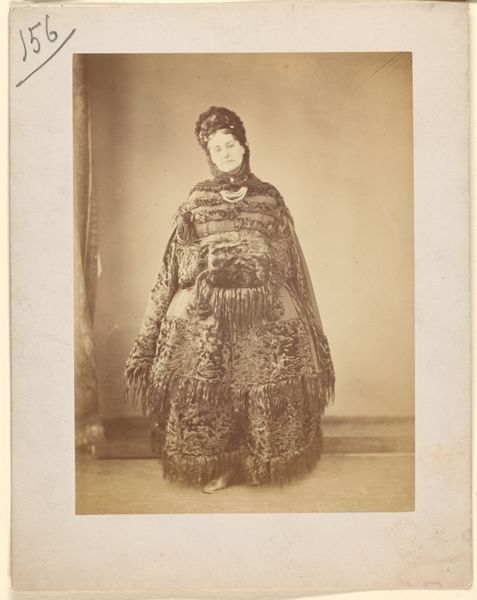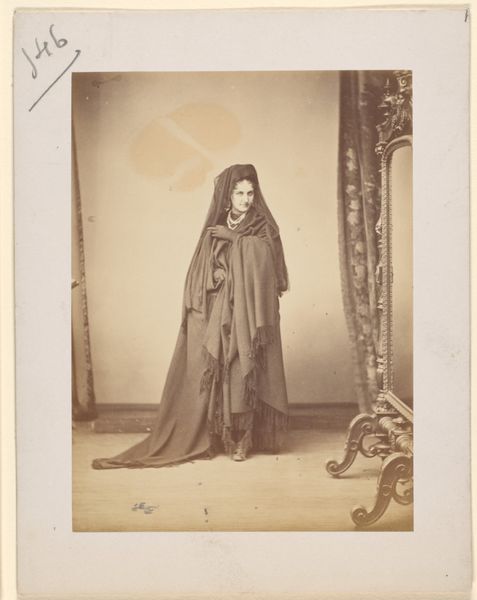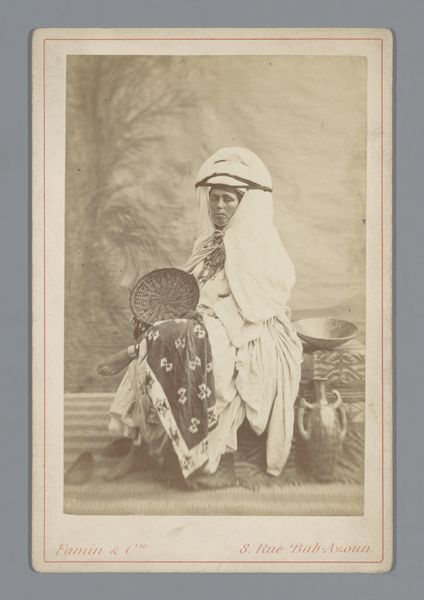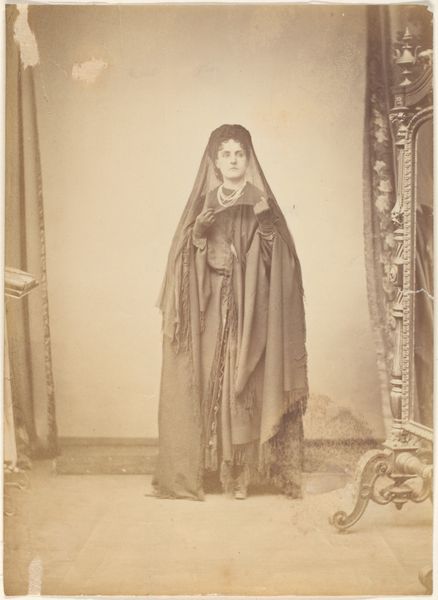
photography, albumen-print
#
portrait
#
photography
#
19th century
#
charcoal
#
albumen-print
#
realism
Dimensions: image: 23 × 16.3 cm (9 1/16 × 6 7/16 in.) sheet: 25.5 × 17.5 cm (10 1/16 × 6 7/8 in.)
Copyright: National Gallery of Art: CC0 1.0
Editor: So, this is an albumen print photograph from around 1855, titled "Portrait of a Woman." There’s something incredibly haunting about her veiled face and the stark lighting. What do you see in this piece? Curator: I see a potent intersection of gender, representation, and power dynamics, particularly relevant to the context of 19th-century photography. The veil, of course, immediately reads as a signifier of cultural identity, but I wonder what it truly conceals, and perhaps more importantly, what it reveals about the gaze of the Western photographer capturing this image. This image has tones that may also make me think of class. Editor: Interesting! It does make you question who is looking at whom, and for what purpose. Did the woman have any agency in how she was presented? Curator: Precisely. We need to consider the history of photography itself as a tool of documentation, but also often of colonial exploitation and exoticization. The very act of capturing this woman’s image is embedded within that power structure. The pose feels staged. But could it have been? What do you read in the way her garment is handled? Editor: It's almost like she’s gathering it up, as if she might move or is maybe protecting herself from something? The agency is definitely something I hadn’t considered initially. Curator: And think about the medium itself. Albumen prints, with their delicate tones and textures, often romanticized the subjects they portrayed. But here, that romanticism is complicated by the very visible signs of a culturally-determined 'lack of freedom' that could raise political discussions. How can we reconcile these conflicting narratives? It’s a work filled with tensions. Editor: It's given me a lot to think about, seeing the work through the lens of power, identity, and historical context makes it more urgent. Curator: Absolutely, and remembering this photo's place within evolving cultural dialogue around such depictions empowers viewers to have their own informed perspectives.
Comments
No comments
Be the first to comment and join the conversation on the ultimate creative platform.
